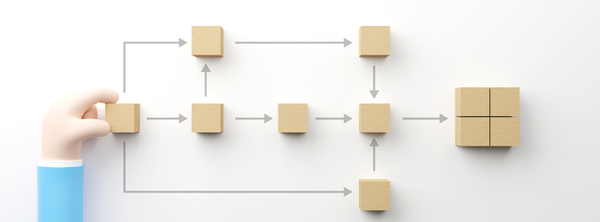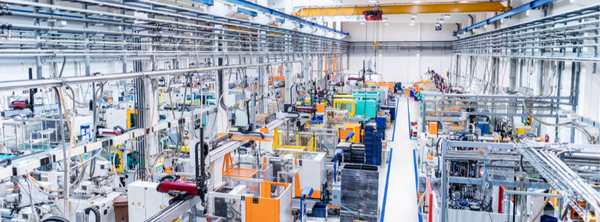Cutting the Waste: A Deep Dive into the World of Muda in Manufacturing
Efficiency is a fundamental aspect of contemporary manufacturing, directly influencing industry productivity and profitability. To sustain high efficiency, businesses strive to comprehend and manage Muda, a concept deeply ingrained in lean manufacturing principles.

Art Smalley, President of Art of Lean Incorporated, clarifies this concept in a compelling video presentation. Smalley provides insights that are both historically significant and practically applicable, thoroughly exploring the concept of Muda.
Muda, a Japanese term meaning waste, refers in lean manufacturing to any activity that consumes resources without adding value to the final product or service. Understanding and managing Muda is vital for achieving high efficiency in manufacturing processes.
A critical aspect of understanding Muda is distinguishing between motion and work. Motion encompasses any physical movement, such as walking or reaching for a tool, that does not contribute value to the final product. Conversely, work involves activities that transform raw materials into a finished product.
Eliminating non-value-adding motion is essential for reducing Muda. In lean manufacturing, there are seven recognized types of waste: overproduction, waiting, unnecessary transportation, over-processing, excess inventory, unnecessary motion, and defects.
Identifying these types of waste is crucial for effectively managing Muda and achieving high productivity levels. Smalley illustrates these principles with a practical example, demonstrating how a manufacturing company reduced Muda by eliminating unnecessary motion and waiting in their processes. This led to significant cost savings and enhanced overall productivity.
Understanding and managing Muda is essential for attaining high efficiency in modern manufacturing. By differentiating between motion and work, identifying the seven types of waste, and implementing practical solutions, businesses can reduce Muda and realize substantial improvements in productivity and profitability.
What is Muda?
Muda is a key concept in Lean Manufacturing, originating from Japanese practices. It represents any activity that consumes resources without adding value to the final product or service. Muda manifests in several forms: overproduction, excess inventory, waiting time, unnecessary motion, defects, and untapped employee creativity.
The Lean methodology stresses the importance of identifying and eliminating Muda to boost productivity and efficiency. By removing Muda, organizations can concentrate on value-adding activities that directly benefit the customer. This shift reduces waste, enhances quality, increases speed, and lowers costs. Successfully managing Muda involves a thorough understanding of the value stream and a commitment to continuous improvement.
Historical Context of Muda
The concept of waste reduction in manufacturing has a long history, dating back to the 1920s when Henry Ford pioneered efficient work methods in his production lines. Ford's innovative approaches laid the groundwork for future advancements in manufacturing efficiency. However, Toyota significantly advanced this concept in the 1950s by developing a more structured and systematic approach.
The Training Within Industry (TWI) Job Methods course heavily influenced Toyota's transformative work. This course emphasized the importance of eliminating, combining, rearranging, and simplifying unnecessary elements within manufacturing processes. By focusing on these principles, Toyota aimed to streamline production, enhance efficiency, and minimize waste.
This structured approach revolutionized Toyota's operations and set new standards for the entire manufacturing industry. The emphasis on continuous improvement and waste reduction became central to what is now known as Lean Manufacturing. Toyota's methodologies highlighted the critical need to examine every aspect of the production process, ensuring that only value-adding activities are retained. This focus on efficiency has since been widely adopted and remains a cornerstone of modern manufacturing practices.
Motion vs. Work: A Distinct Difference
A crucial aspect of understanding Muda involves distinguishing between 'motion' and 'work.' Motion refers to any physical movement within a process, while work is the effective action that adds value to the product or service. It's important to recognize that not all motion contributes to productive work, a nuance often overlooked in traditional manufacturing setups. By identifying and reducing non-value-adding motions, organizations can significantly enhance efficiency and productivity.
Types of Waste in Manufacturing
By identifying and addressing these types of waste, manufacturers can streamline their processes, reduce costs, and improve overall efficiency and quality.
In manufacturing, Muda, or waste, can be categorized into several types, each representing a potential area for improvement:
- Overproduction: Creating more products than needed or producing them before they are required, leading to excess inventory and increased storage costs.
- Waiting: Idle time when resources such as workers, machines, or materials are not being utilized efficiently, resulting in delays and reduced productivity.
- Transporting: Unnecessary movement of materials, products, or information, which increases handling time and the risk of damage or loss.
- Inappropriate Processing: Using overly complex tools, techniques, or processes that are more elaborate than necessary, leading to wasted effort and resources.
- Unnecessary Inventory: Holding excess raw materials, work-in-progress, or finished goods, which ties up capital and storage space while increasing the risk of obsolescence.
- Unnecessary Motion: Movements by employees or machinery that do not add value to the product or service, causing fatigue and inefficiencies.
- Defects: Producing defective products that require inspection, rework, or scrapping, leading to wasted materials, labor, and time.
- Unused Talent or Underutilized Skills: Failing to fully leverage the skills, talents, and knowledge of employees, which results in missed opportunities for innovation and improvement. Encouraging employee participation in problem-solving and continuous improvement processes can enhance efficiency and morale.
The eighth waste in lean manufacturing, not part of the original seven wastes, is Unused Talent or Underutilized Skills. This refers to not fully leveraging employees' skills, talents, and knowledge. When organizations fail to utilize their workforce effectively, they miss valuable insights, innovations, and improvements that employees can contribute. Encouraging and empowering employees to participate in problem-solving and continuous improvement processes can significantly enhance efficiency and morale.

A Practical Example: The Nut and Bolt
Consider Smalley's example in the video, which examines the process of tightening a nut onto a bolt during assembly. While this process might initially appear to add value, closer inspection reveals that only the final quarter turn of the nut, which achieves the required torque, truly adds value. The preceding motions, although necessary in the current process, are classified as 'incidental waste.' This example underscores the nuanced understanding needed to identify and reduce waste in manufacturing processes.
Reducing Waste: A Path to Efficiency
Reducing Muda isn't about cutting corners or compromising quality. It's about meticulously examining every process step and asking, "Does this add value from the customer's perspective?" If not, can it be eliminated, simplified, or improved? This approach might involve rethinking the factory floor layout to minimize transportation waste, automating certain processes to reduce motion waste, or enhancing quality control to reduce defects. Organizations can streamline operations and deliver greater value to their customers by focusing on these improvements.
Conclusion: Embracing Lean Principles
The concept of Muda extends beyond a manufacturing principle; it's a mindset that encourages critical examination of processes and the continuous pursuit of improvement. By distinguishing between motion and work, recognizing the various types of waste, and applying these principles practically, businesses can move closer to the ideal of lean manufacturing—where every action and process is streamlined to deliver maximum value to the customer. Embracing these lean thinking principles will be essential for sustaining competitiveness and driving innovation in the evolving world of manufacturing.
References and Resources:
[1] J. Bicheno and M. Holweg, The Lean toolbox: the essential guide to Lean transformation, 4. ed. Buckingham: PICSIE Books, 2009.
[2] Narusawa T. and Shook J., Kaizen Express: fundamentals for your lean journey. Cambridge, Mass: Lean Enterprise Institute, 2009.
[3] Art Smalley, “Art of Lean on Work & Waste, Part 1: A Focus on Muda,” Lean Enterprise Institute. [Online]. Available: https://www.lean.org/the-lean-post/articles/art-of-lean-on-work-waste-part-1-a-focus-on-muda/
[4] Art of Lean on Work & Waste, Part 1: A Focus on Muda, (Nov. 18, 2020). [Online Video]. Available: https://www.youtube.com/watch?v=aRdOqw607Mc




